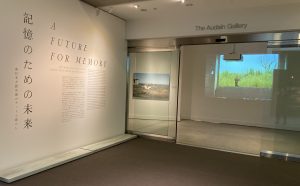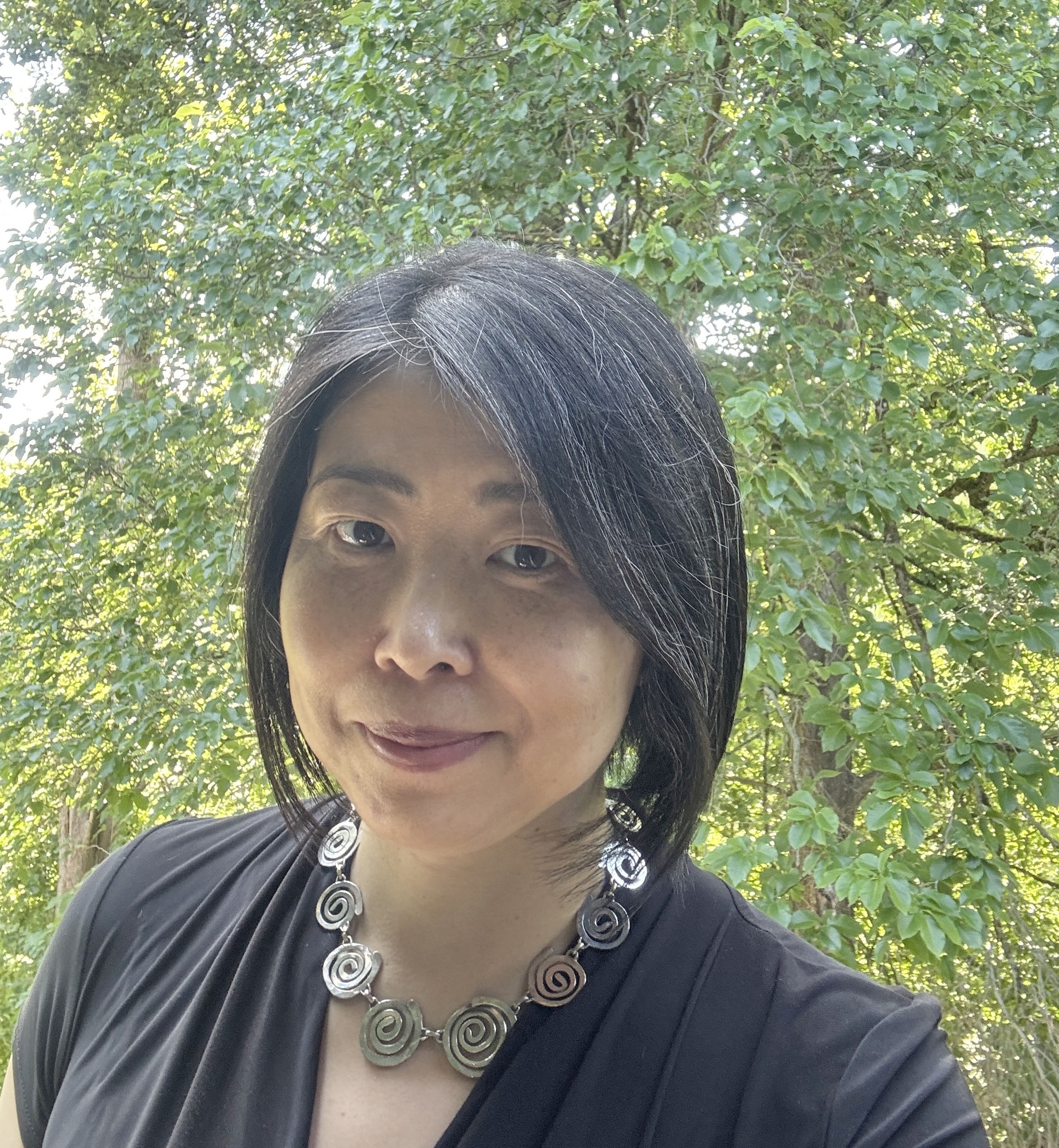Fuyubi Nakamura
Research Area
Education
DPhil, University of Oxford, 2006
MSc with Distinction, University of Oxford, 1999
BA (Hons), University of Sussex
About
Fuyubi Nakamura (中村冬日) is a socio-cultural anthropologist and curator trained at the University of Oxford. Fuyubi specializes in the anthropology of art, museum studies, and material and visual culture studies. She has taught in these fields in the graduate school at the Australian National University (2007-2010) and University of Tokyo (2012-2013), and curated exhibitions internationally prior to joining UBC in 2014.
Her long-term research of over twenty five years is an anthropological study of contemporary Japanese calligraphy. In addition to her fieldwork in Japan, she also carried out a research project that investigated the world of Japanese calligraphy in South American countries with large Japanese immigrant communities such as Argentina and Brazil. She took a leave from academia following the triple disaster in Japan in 2011 or 3.11, and was involved in relief and recovery activities in Miyagi Prefecture, and continues to do research about the aftermath of 3.11.
Fuyubi was an associate researcher with the Institute for Art Anthropology at Tama Art University, Tokyo (2010-2015), a guest curator at the National Museum of Oriental Art in Buenos Aires (2010-11) and the producer/curator of the Tokunoshima island art project, Japan (2013-2014). Outside academia and museums, she has worked as a project coordinator for film festivals organized by NHK (Japan’s public broadcaster) and in business in Tokyo between her degrees and also as a freelance translator for a number of years. Born in Tokyo, Fuyubi grew up in different parts of Japan and spent a year as an AFS intercultural programs exchange student in New Zealand before moving to England in 1992. She has travelled widely, especially in India and Europe and has spent several months in South America (Argentina, Brazil and Peru).
Teaching
ASIA 498/ ASIA 598: Asia in Museums and Beyond
Thursdays, 10am-1pm, Winter 1, 2025
Museums and exhibitions have played significant roles in contemporary society: museums are not only a place of historical memory or cultural heritage, but also a location of interaction where identities are contested and negotiated. This course examines the poetics and politics of representing and exhibiting cultures by studying topics including collecting, colonialism, Indigenous cultures and the issues of classifications. It explores the diversity of visual and material cultures of Asia including art, photography and museums.
- This is a research-intensive discussion-based seminar course (not lectures).
- In-person attendance is mandatory for the course.
- Visits to museums will be an integral part of the course.
- There is a course cost of around $15-20 (museum admission fees).
- Different assignments for ASIA 498 students and for ASIA 598 students.
- The class will not be recorded.
Research
While her primary expertise lies in Japan, Fuyubi has also studied Indian art and worked on collaborations on Himalaya-related projects. Her work as a curator responsible for the entire Asia collection at MOA requires her to continuously expand the breadth of her knowledge of Asian cultures.
Her research interests include material and visual cultures with special interest in Japan and its diasporas in Argentina and Brazil; Indigenous cultures; India and Tibet; contemporary art, photography and the relation between memory and objects, especially within the context of the 3.11 disaster in Japan.
Her recent projects around Indigeneity in Japan
“Art and Sinuye with Ainu Artist Mayunkiki.” Edo Outsiders: Ainu and Ryūkyūan Art conference at the Center for 17th-& 18th-Century Studies, UCLA. I prepared the paper first in Japanese in collaboration with Mayunkiki, April 19, 2024.
Recasting Ainu Indigeneity in Museums Through Performing Arts, August 2022.
Ainu, Okinawa and Indigeneity Series, February – March 2021.
Selected curated exhibitions and museum projects
A Future for Memory: Art and Life after the Great East Japan Earthquake/記憶のための未来―東日本大震災後のアートと暮らし, Museum of Anthropology at UBC, Canada, February 11– September 19, 2021. Curator.
Awarded the 2022 Michael M. Ames Prize for Innovative Museum Anthropology, the most prestigious award in this field in the English speaking world and also an honourable mention for the Inaugural 2024 Sumie Jones Prize for Project Leadership in Japan-centered Humanities from Northeast Asia Council (NEAC), Association for Asian Studies (AAS) and for the 2022 Award for Outstanding Achievement in the Research Category from the Canadian Museum Association.




This article is adapted from the Introduction of the publication that accompanies the exhibition, A Future for Memory: Art and Life after the Great East Japan Earthquake, 2021.
A Future for Memory online programs
- A Future for Memory: A Conversation with Yū Miri (Facilitated and edited by Fuyubi Nakamura), October 5, 2022.
- A Future for Memory: A Conversation with Hiroyasu Yamauchi (Facilitated and edited by Fuyubi Nakamura), August 3, 2021.
- A Future for Memory: Conversation with Yuichi Shindo + Munemasa Takahashi (Facilitated and edited by Fuyubi Nakamura), August 3, 2021.
- A Future for Memory: A Conversation with Atsunobu Katagiri and Fumihiko Futakami (Facilitated and edited by Fuyubi Nakamura), July 15, 2021.
- A Future for Memory: A Conversation with the Lost Homes Scale Model Restoration Project Team members (Facilitated and edited by Fuyubi Nakamura), June 29, 2021.
- A Future for Memory: Conversations with Masao Okabe and Chihiro Minato (Facilitated and edited by Fuyubi Nakamura). May 18, 2021
- Online Curator Tour of A Future for Memory/記憶のための未来オンラインツアー (Edited by Rea Saxena and Fuyubi Nakamura), March 11, 2021.
Traces of Words: Art and Calligraphy from Asia, Museum of Anthropology at UBC, Canada, May 11 – October 9, 2017. Curator.
Awarded the Award for Outstanding Achievement in the Research Category from the Canadian Museum Association (2018).




Photo: Yuko Shimizu
(In)visible: The Spiritual World of Taiwan through Contemporary Art/形(無)形-台灣當代藝術的靈性世界, Museum of Anthropology at UBC, Canada, November 20, 2015 – April 3, 2016. Curator.
Tokunoshima Island Art Project, Japan, July 2013 – August 2014. Curator/Producer.
Trazos del Tiempo, Trazos de Palabras: Obras de Artistas Japoneses/Traces of Time, Traces of Words: Works by Japanese Artists at the Culture Centre of the National Foundation of Arts of Argentina hosted by the National Museum of Oriental Art, Buenos Aires, Argentina, 1– 30 March 2011. Curator.
Ephemeral but Eternal Words: Traces of Asia, the School of Art Gallery, The Australian National University, Canberra, Australia, 6 April‐1 May 2010. Curator.
I am a Curator, a process-based exhibition project by artist Per Hüttner at Chisenhale Gallery, London, UK. 13 December 2003. Co-curator.
The Tibet Album:British Photography in Central Tibet 1920 -1950, the Pitt-Rivers Museum, Oxford, the UK, 2004-2006. Research assistant.
Seeing Lhasa: British Depictions of the Tibetan Capital 1936-1947, an exhibition at Pitt Rivers Museum, Oxford, 7 September 2003 – 30 November 2004. Curatorial Assistant.
Publications
Edited volumes
A Future for Memory: Art and Life after the Great East Japan Earthquake/記憶のための未来―東日本大震災後のアートと暮らし, Vancouver: The Museum of Anthropology at UBC, 2021.
Traces of Words: Art and Calligraphy from Asia, Vancouver: Vancouver: Figure 1 Publishing and MOA, 2017.
Asia through Art and Anthropology: Cultural Translation across Borders. Edited with Morgan Perkins and Olivier Krischer. London and New York: Bloomsbury Academic, 2013.
Trazos del Tiempo, Trazos de Palabras: Obras de Artistas Japoneses/Traces of Time, Traces of Words: Works by Japanese Artists, Buenos Aires: The National Museum of Oriental Art, 2011.
Ephemeral but Eternal Words: Traces of Asia, Canberra: The Australian National University School of Art Gallery, 2010.
Exhibition catalogues (with introduction but without essays by other contributors)
(In)visible: The Spiritual World of Taiwan through Contemporary Art/形(無)形-台灣當代藝術的靈性世界, Vancouver: The Museum of Anthropology at UBC, 2015.
Selected journal articles and book chapters
“Relational Creativity in the Aftermath of 3.11” in a special issue, “Performance, Projection, Provocation! Relational Creativity in Contemporary Japan,” edited by Jennifer Coates and James Coates, The Asia-Pacific Journal: Japan Focus, 2025. 23: 1–18.
“A Future for Memory: Resurgence of Culture-Nature in the Aftermath of 3.11.” In Alexandra Bounia and Andrea Witcomb (eds.) The Ethics of Collecting Trauma: The Role of Museums in Collecting and Displaying Contemporary Crises, Routledge, 2024, 40–60.
“Responses in the Aftermath of the Great East Japan Earthquake: A Conversation.” With Hiroyasu Yamauchi. In Cara Krmpotich and Alice Stevenson (eds.) Collections Management as Critical Museum Practice, London: UCL Press, 2024, 487–504.
“Hokkaidō 150: Settler Colonialism and Indigeneity in modern Japan and Beyond” with Tristan R. Grunow et al. Critical Asian Studies, 2019, 51 (4).
“The Infinite Possibility of Words in Japanese Calligraphy” in Nakamura, F. (ed.) Traces of Words: Art and Calligraphy from Asia, Vancouver: Figure 1 Publishing and MOA, 2017.
“Memory in the debris: The 3/11 Great East Japan earthquake and tsunami.” Anthropology Today, Vol.28, Issue 3, 2012.
“A Brief Introduction to Japanese Calligraphy/Una breve introducción a la Caligrafía Japonesa” in Nakamura, F (ed.) Traces of Time, Traces of Words: Works by Japanese Artists/Trazos del Tiempo, Trazos de Palabras: Obras de Artistas Japoneses, Buenos Aires: National Museum of Oriental Art, 2010.
“Creating or Performing Words?: Observations on Contemporary Japanese Calligraphy” in Ingold, T. and Hallam, E. (eds.) Creativity and Cultural Improvisation (ASA Monographs 44), Oxford: Berg, 2007.
Video publications (online)
“Anti-Asian Racism in the Historical Context: The Dispossession of Japanese Canadian.” A dialogue with Sherri Kajiwara, the Director |Curator of the Nikkei National Museum for the Responsive Dialogues: Racism in Canada series. (Edited by Fuyubi Nakamura), May 3, 2021
Selected blog posts
“Ask MOA: What is This Vase?” about the Chinese vase known as Famille rose and known in Chinese as fencai (粉彩) or ruancai (軟彩 / 软彩), literally meaning “soft colours” or “pale colours,” and later called as yangcai (洋彩) or “foreign colours.” June 24, 2020.
“Ask MOA: What Are These Figures?” about fertility dolls known as babli from Karnataka, South India. May 26, 2020.
“Viruses Have No Nationality: Images of “Asia” during the Pandemic.” May 20, 2020.
“Amabie: A Japanese Spirit Figure for the Pandemic.” April 21, 2020.
Awards
Fuyubi has received numerous awards and grants including the SSHRC Connection Grant for her A Future for Memory project, 2022 Michael M. Ames Prize for Innovative Museum Anthropology, Canadian Museum Association (CMA) Award of Outstanding Achievement in the Research – Art category (2018) for her Traces of Words: Art and Calligraphy from Asia project and an honourable mention for the same award (2022) for her A Future for Memory as well as the Best Anthropology Prize for Asia through Art and Anthropology: Cultural Translation across Borders (Bloomsbury Academic, 2013) from the Art Association of Australia and New Zealand (2014).
